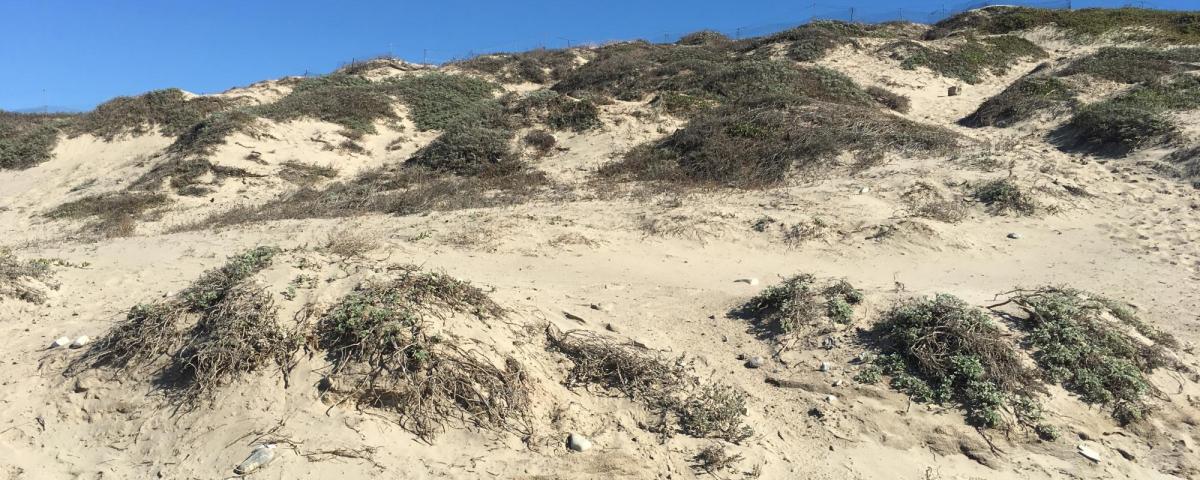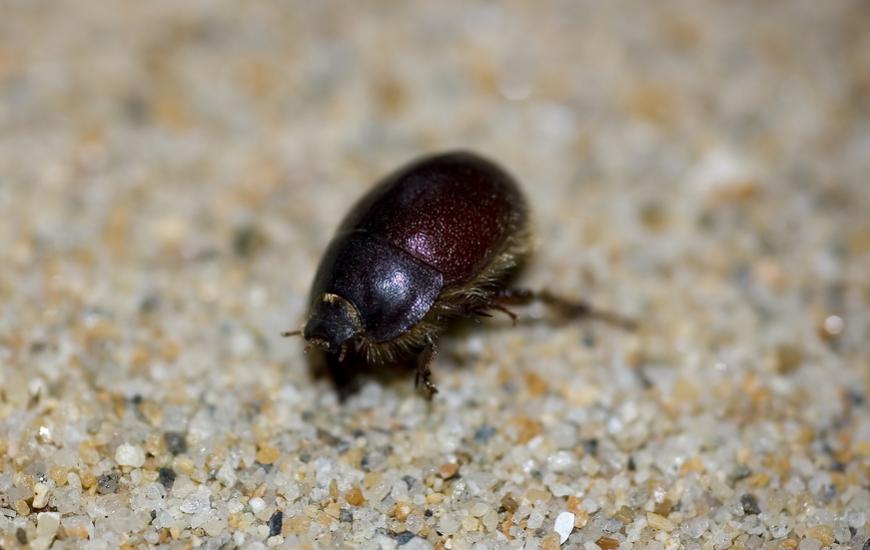- Sand dune formation often starts with a native beach plant.
- Since desiccation (drying out) is a threat, the leaves of native beach plants are frequently a light green or greyish color that reflects sunlight.
- Dunes can act as natural barriers against sea level rise and storm surge.
Tenacious Dune Builders
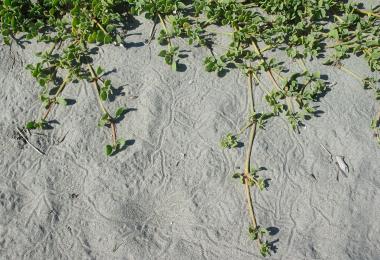
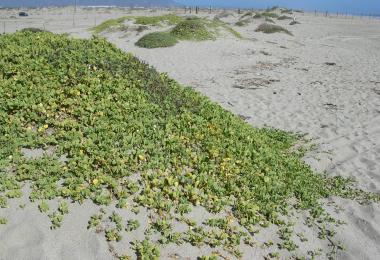
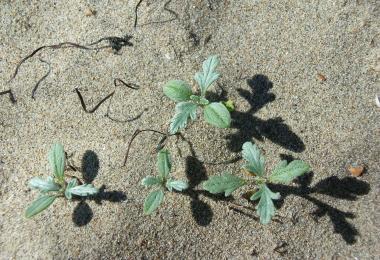
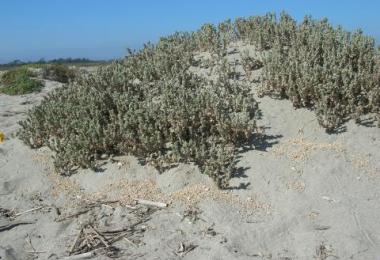
Plants specially adapted to grow in salty, shifting sand thrive at the very top of the beach in a zone referred to as the coastal strand. Here they usually are beyond the reach of the waves in summer but can be washed over in the winter and spring. The loose sediment, scarce freshwater, and highly saline conditions are inhospitable to most plants, but the few species that live here cannot survive anywhere else. These pretty, flowering plants grow close to the ground, spreading out rather than growing tall. They often have deep taproots and roots at their nodes that allow them to spread, firmly anchor in the sand, and stabilize the sand against erosion. Many are succulents with small leathery leaves that hold moisture. Since desiccation (drying out) is a threat, the leaves are frequently a light green or greyish color that reflects sunlight.
Sand Dune Growth
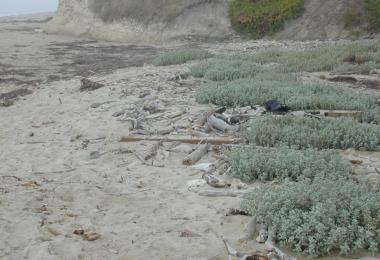
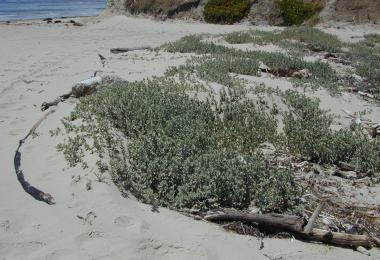
Sand dune formation often starts with a native beach plant - it traps sand blowing in the wind, forming small mounds or hummocks of sand. Wrack also helps build sand dunes by catching sand and seeds and then providing nutrients and moisture to the plants. Over time these mounds grow with the plants providing structure and stability. This process of sand trapping and mound building can occur even on relatively narrow beaches. These mounds and foredunes can store sand above the waves that help buffer the coast and beach ecosystem against storms. Some sand dunes persist for well over 10,000 years!
100 Days at the Beach
The coastal strand plant community exists in dynamic conditions. These photos illustrate how the conditions of the coastal strand plant community change over time from plants growing in dry sand (Photo 1 – May 22, 2013, above) to plants in wetted sand after a spring tide during which some plants washed away (Photo 2 – May 25, 2013, below left). One hundred days later the tide has not reached the plants again; the sand is dry and the plants are thriving (Photo 3 – September 5, 2013, below right).
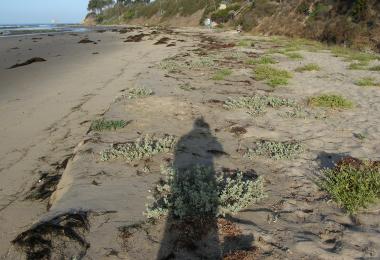
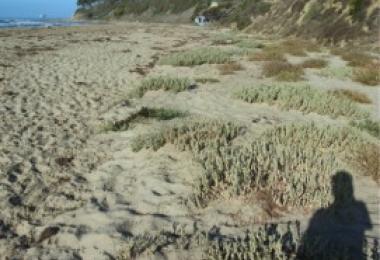
Major Threats to Dunes and Coastal Strand Communities:
- Beach grooming
- Driving on the beach
- Beach nourishment
- Coastal development, including coastal armoring
- Climate change/sea level rise
- Introduced (non-native) species
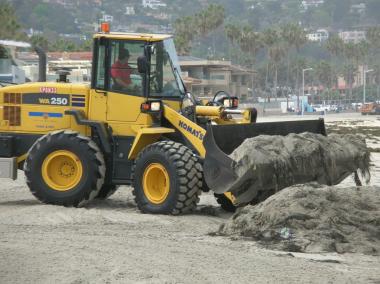
Beach Grooming Impacts to Plants
Vast stretches of beach in Southern California are groomed to remove kelp and trash. Among other impacts, the grooming process leaves beaches devoid of coastal strand plants and flattens dunes, changing the topography of the coast. Without plants, the sand is loosened, exposed to the wind, and holds less water and nutrients. The flattened coastal strand and dune area makes the dry sandy beach artificially wide and flat.
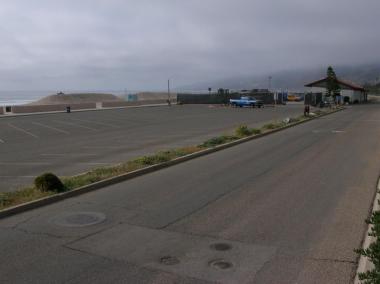
Climate Change/Sea Level Rise Impacts on Native Beach Plants
The highest sections of the beach including coastal strand and dune communities are often sandwiched between the threats of coastal development on one side and sea level rise on the other, a situation called ‘coastal squeeze".
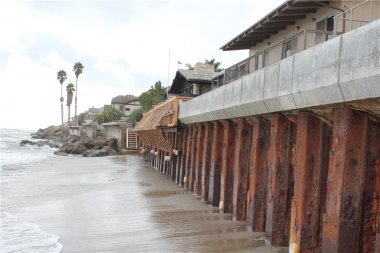
Coastal Armoring Impacts on Plants
The band of dry sand on the beach narrows or disappears entirely in front of coastal armoring structures and, along with it, the coastal strand community. Notice there are no plants growing in front of this sea wall.
Non-Native Species Impacts on Beach Plants
There are many non-native species along the beach and dunes, but some are more problematic for native species than others. Ice plant and European beach grass form very dense mats that cover 100% of the sand, rather than 25-50% cover typical of native plants. These non-native plants exclude native species and prevent least terns and snowy plover from nesting. They even change the shape of the dunes, often making them steeper.
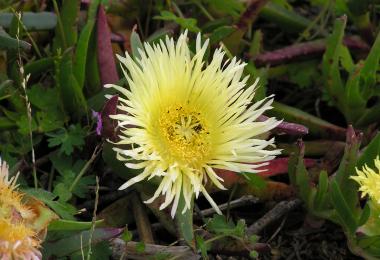
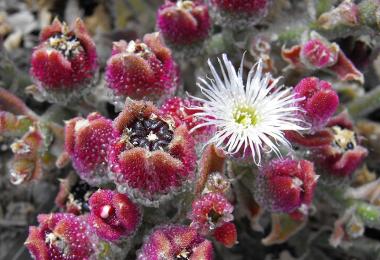
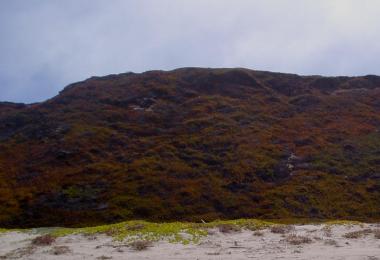
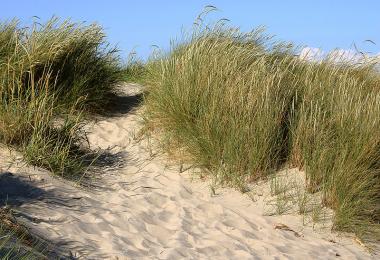

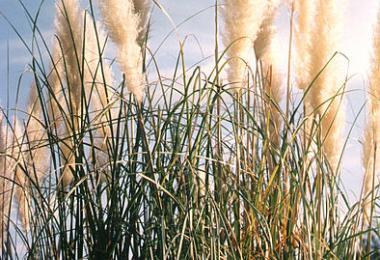
Rare Species
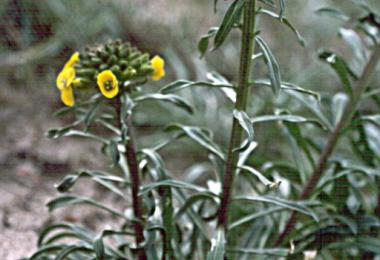
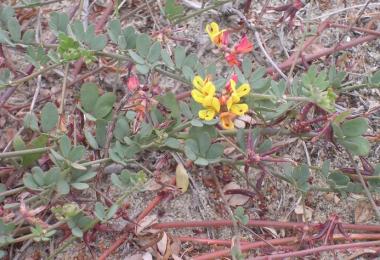
Because of the severe threats to Southern California coastal strand and dune habitat, many beach plants, included those listed below, are rare and listed by the state or federal government as threatened or endangered. For more information, please explore the information available at the California Native Plant Society.
|
Scientific Name |
Common Name | CA Endemic? | Federal Status |
| Arctostaphylos morroensis | Morro Manzanita | yes | Threatened |
| Astralagus pycnostacyus var. lanosissimus | Ventura marsh milk-vetch | yes | Endangered |
| Astralagus tener var. titi | Coastal dunes milk-vetch | yes | Endangered |
| Castilleja mollis | Soft-leaved paintbrush | yes | Endangered |
| Chloropyron maritimum ssp. maritimum | Salt marsh bird's beak | no | Endangered |
| Chorizanthe howellii | Howell's spineflower | yes | Endangered |
| Chorizanthe pugens var. rpugens | Monterey spineflower | yes | Endangered |
| Chorizanthe robusta var. robusta | Robust spineflower | yes | Endangered |
| Cirsium scariosum var. loncholepis | La Graciosa thistle | yes | Endangered |
| Erysimum menziesii | Menzies' wallflower | yes | Endangered |
Quick Facts
- Sand dune formation often starts with a native beach plant.
- Since desiccation (drying out) is a threat, the leaves of native beach plants are frequently a light green or greyish color that reflects sunlight.
- Dunes can act as natural barriers against sea level rise and storm surge.


